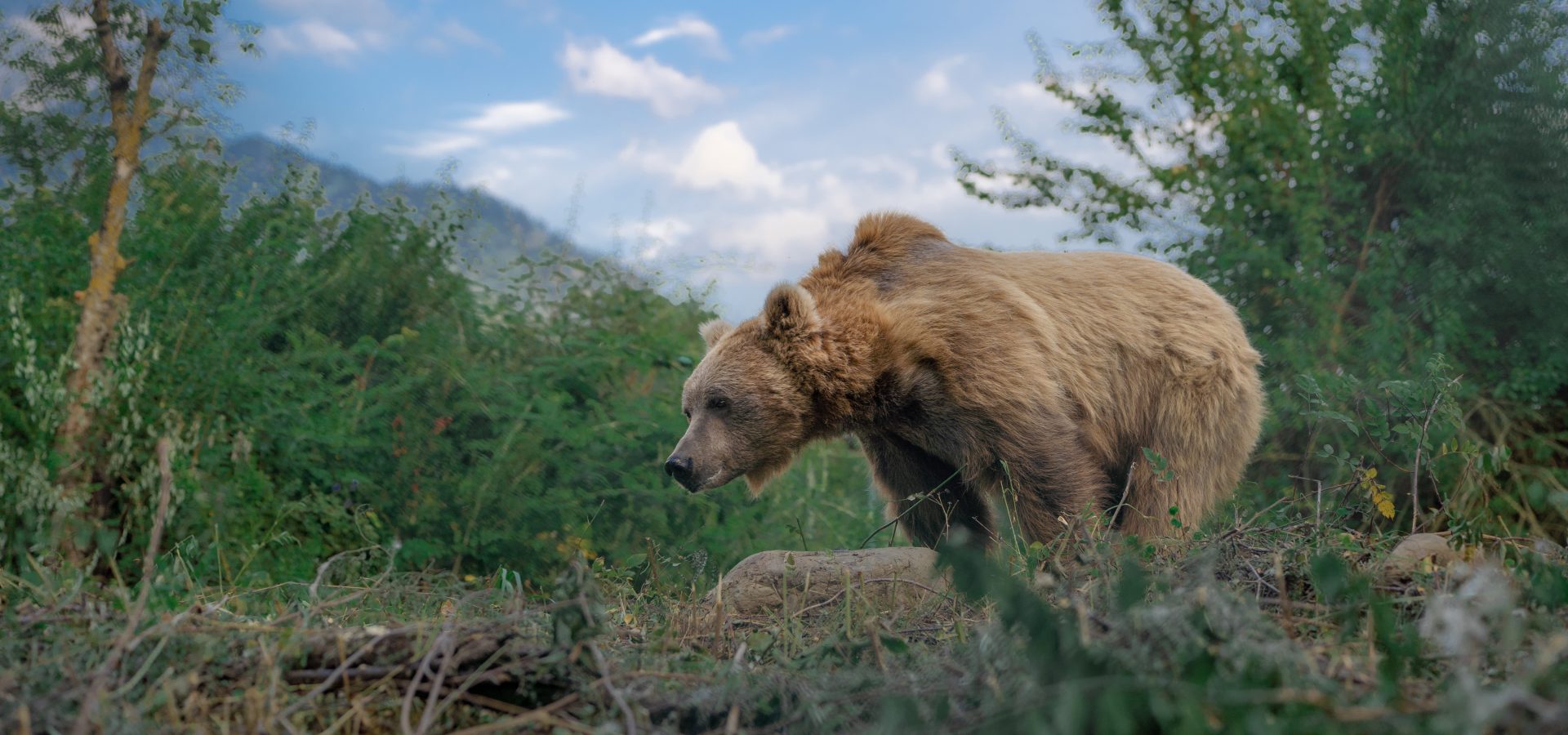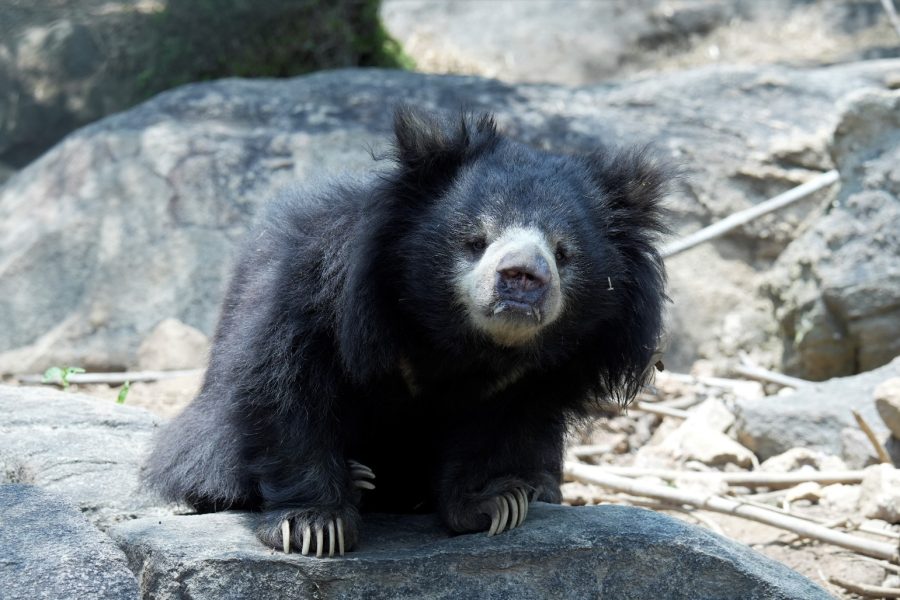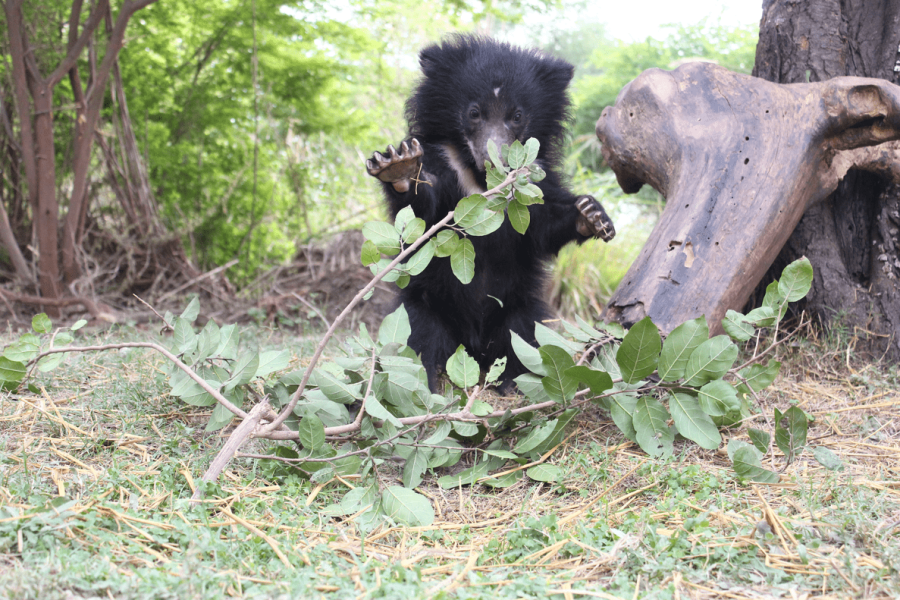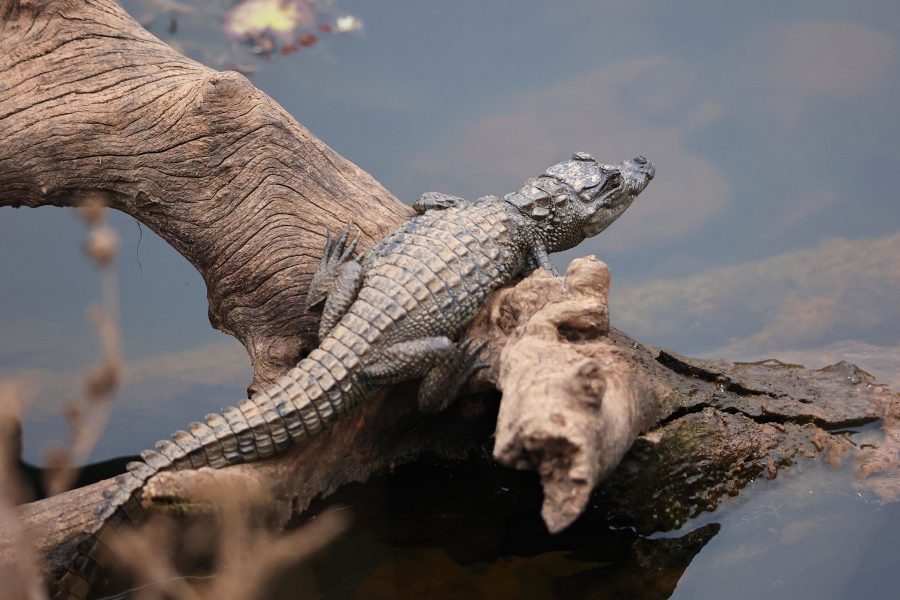Ever wondered what a bear prefers to eat? Grass, berries, fish, insects, or… biryani? With the limited information available on Himalayan brown bears, here is a brief about their diet!
A dominant carnivore, the Himalayan brown bear (Ursus arctos isabellinus) inhabits the higher altitudes of the North and Western Himalayan landscape in India. Occupying alpine meadows, scrub, and subalpine forests, this bear is distributed in the union territories of Jammu and Kashmir and Ladakh, as well as the Himalayan states of Himachal Pradesh and Uttarakhand. Small populations of brown bears also exist across other areas in the Himalayas, Karakoram, and Hindu Kush ranges in southern Asia.
In India, the potential distribution range for the Himalayan brown bear is approximately 36,800 sq. km., with only about 10% of this area protected under the existing protected area network. Being one of the sparsely distributed large mammals in the Indian subcontinent, brown bears’ ecology and behaviour remain poorly understood due to their inaccessible and high-altitude habitat.
Read on to learn about what the Wildlife SOS found about the Himalayan brown bear diet during an interesting research!
What are the Bears Consuming?
Himalayan brown bears are known to be opportunistic omnivores, meaning they display adaptability in their diet. Brown bears have evolved numerous adaptations for herbivory, such as longer claws for digging, expansion of molar chewing surfaces, and an extremely large intestine capable of efficiently processing protein.
A comprehensive study conducted by the Wildlife SOS team aimed to understand the diet of Himalayan brown bears through scat analysis. After collecting bear scats from the study area, microscopic methods were used to gain valuable insights into their feeding habits. It was found that the bears consume a wide variety of food sources depending upon their availability.
Brown bear diet comprises diverse fruits, plant materials, and occasionally, animals like small mammals, fishes, and insects. After undergoing their hibernation period, brown bears are known to dig extensively for herbs. Graminoids, represented by grasses and sedges, are known to constitute the bulk of their diet. Roots, corns, and bulbs of plants are generally dug; ants, wasps, moths, and beetles are acquired from nests; fish, mammals, and birds are usually predated or scavenged.
Let’s Dig a Little Deeper!
What came as a shock to the team was the dominant food source in the brown bears’ diet: garbage! The study found that garbage dumps acted as a primary food source for the bears, providing easily accessible food. Anthropogenic foods such as livestock feed, pet food, human foods, and garden crops were also identified. After studying the scats of 408 brown bears, the research revealed that 86 bears had excreted plastic carry bags, milk powder, and chocolate covers. Some scats even had remnants of glass! Nearly three-fourths of all that brown bears consumed came from garbage, which means that their frequency to scavenge garbage is much higher than eating wild plant matter, crops, and even hunted sheep!
This dependence on human-generated waste was especially observed in areas where humans and bears coexisted. The occurrence of different food items in the scats varied monthly, with garbage food items being more prevalent during tourist-heavy months. The consumption of wild plant matter increased from July to October, corresponding to the phenology of grasses. Additionally, camera trap footage showed that brown bears foraged on various food waste items, including leftovers from chicken, mutton, biryani, and other discarded food materials found in garbage sites.
Unfortunately, human-bear conflicts arise when humans encroach on natural habitats and share resources. While the bears’ opportunistic behaviour allowed them to adapt to various food sources, it also led to extensive damage to crops, orchard fruits, apiaries, and livestock. Brown bears raid fields in the vicinity of villages, and people collect non-timber forest produce and graze their livestock in areas where the bears forage. This reliance on shared resources often leads to conflict situations, with bears being seen as threats to livelihoods, resulting in a negative perception of ursines among local communities.
The Story of Sebastian
In 2018, locals began noticing a young Himalayan brown bear frequenting the residential area in Sonamarg, Jammu and Kashmir. The bear was seen preying upon livestock, raiding crop fields, and even scavenging from garbage bins! Concerned for the bears and their own safety, the residents promptly contacted the Wildlife Protection Department. Even after being relocated, the bear returned to Sonamarg for a second time. He was taken away once again, but the bear’s relentless search for food led him back to the region for the third time. It became apparent that the bear had become highly dependent on human-associated food sources, making survival in the wild increasingly challenging.
Recognising the urgent need to protect the bear, later named Sebastian, and prevent further human-wildlife conflicts, the Wildlife Protection Department rehabilitated him at Wildlife SOS Dachigam Rescue Center. This would ensure his safety from potential retaliatory actions by the locals and also safeguard the community from any conflict. In over five years, Sebastian has become an integral part of the Wildlife SOS family at the centre. Now, he no longer needs to roam in search of food and enjoys his meals prepared by the Wildlife SOS staff from healthy items that can also be found in the wild.
The story of Sebastian is a poignant reminder of the unintended harm that human activities can inflict on wild animals, disrupting their natural behaviour, and forcing them to rely on unnatural food sources. You can support Wildlife SOS by making a donation to protect India’s wild animals from an uphill battle against a constantly changing environment.





